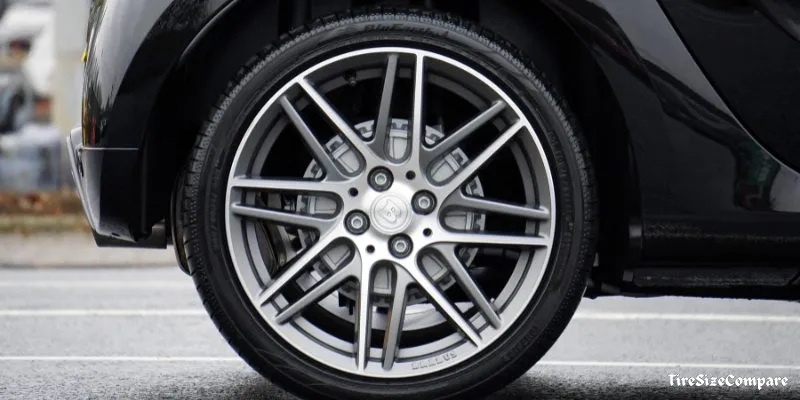Explaining Wheel Sizes

Wheel sizes refer to the dimensions of a vehicle’s wheels, which include the diameter, width, and overall size of the wheel. Understanding wheel sizes helps you make better decisions when replacing or upgrading your wheels.
What Are Wheel Sizes?
Wheel sizes are measured in inches and typically consist of three key components:
- Diameter: This is the distance across the wheel from one side to the other. It’s measured in inches and determines how big the wheel is. For example, a 16-inch wheel is larger than a 15-inch wheel.
- Width: This is the distance from one side of the wheel to the other, measured from the inside edges where the tire sits. Wider wheels can provide better grip but may affect handling and fuel efficiency.
- Offset: This refers to the distance between the wheel’s centerline and the mounting surface. It affects how the wheel sits in the wheel well. A positive offset pushes the wheel inward, while a negative offset pushes it outward.

How Wheel Size Affects Your Vehicle
Wheel size impacts various aspects of your vehicle’s performance:
- Handling: Larger wheels generally offer better handling because they can accommodate wider tires, which provide more grip on the road. However, extremely large wheels can make the ride stiffer.
- Fuel Efficiency: Bigger wheels can affect fuel efficiency. Larger, heavier wheels may require more energy to move, reducing fuel economy.
- Comfort: Larger wheels with lower-profile tires can lead to a rougher ride because there is less cushioning between the wheel and the road. Smaller wheels with higher-profile tires typically offer a smoother ride.
- Appearance: Changing wheel sizes can significantly alter the look of your vehicle. Larger wheels often enhance the car’s appearance, giving it a sportier look, while smaller wheels can make it appear more practical and comfortable.
Choosing the Right Wheel Size
When selecting the right wheel size for your vehicle, consider the following factors:
- Vehicle Specifications: Always check your vehicle’s manual or consult with a professional to ensure the new wheels are compatible. Using wheels that are too large or too small can affect your car’s performance and safety.
- Driving Conditions: If you drive mostly on smooth roads, larger wheels might be beneficial. For rougher terrains, smaller wheels with higher-profile tires may be more suitable.
- Aesthetic Preferences: The look of your car can be customized with different wheel sizes. Choose a size that matches your style preferences while ensuring it meets the performance needs of your vehicle.

Wheel Size Examples
To give you a clearer picture, here are a few examples of common wheel sizes and their uses:
- 15-Inch Wheels: Often found on compact and subcompact cars. They offer a balance between comfort and performance, suitable for everyday driving.
- 17-Inch Wheels: Common on mid-sized vehicles and SUVs. They provide a sportier look and improved handling compared to smaller wheels.
- 20-Inch Wheels: Typically seen on high-end vehicles and trucks. They enhance the vehicle’s appearance but may result in a harsher ride.
How to Measure Wheel Size
To measure wheel size, you need to know the following:
- Diameter: Measure the distance from one edge of the wheel to the opposite edge, passing through the center.
- Width: Measure the width from one inside edge of the wheel to the other inside edge where the tire sits.
- Offset: Measure the distance between the wheel’s centerline and the mounting surface.
Use a tape measure and a ruler to ensure accurate measurements. If you’re unsure, a professional can help you determine the correct size.
How do I know if a wheel size is compatible with my vehicle?
Check your vehicle’s manual or consult with a professional to ensure the wheel size matches your car’s specifications. Using incorrect sizes can affect performance and safety.
Can I change my wheel size without affecting my car’s performance?
Yes, but it’s essential to choose a size that is compatible with your vehicle’s specifications. Larger wheels can improve handling but may affect comfort and fuel efficiency.
What is the difference between wheel diameter and wheel width?
Wheel diameter is the distance across the wheel from one edge to the other, while wheel width is the distance from the inside edges where the tire sits.
How does wheel offset affect my vehicle?
Wheel offset determines how the wheel sits in the wheel well. Positive offset pushes the wheel inward, while negative offset pushes it outward, affecting handling and appearance.
Conclusion
Wheel sizes might seem like a small detail, but they can make a big difference in how vehicles perform and feel.
Whether you’re buying a new bike, changing your car’s wheels, or just curious about why wheels are the way they are, understanding wheel sizes helps you make better choices.
Remember, the best wheel size depends on what you need – there’s no one-size-fits-all answer!



